ProcessFlowDiagram package
Overview
- Process flow diagram (PFD) and process definition document sample and template that can describe the system of deliverables.
- All design data included in this sample is fictitious.
- Samples are intended to be used as a reference for customers to effectively use this product, and we do not make any guarantees, including warranties of marketability and suitability for specific purposes. .
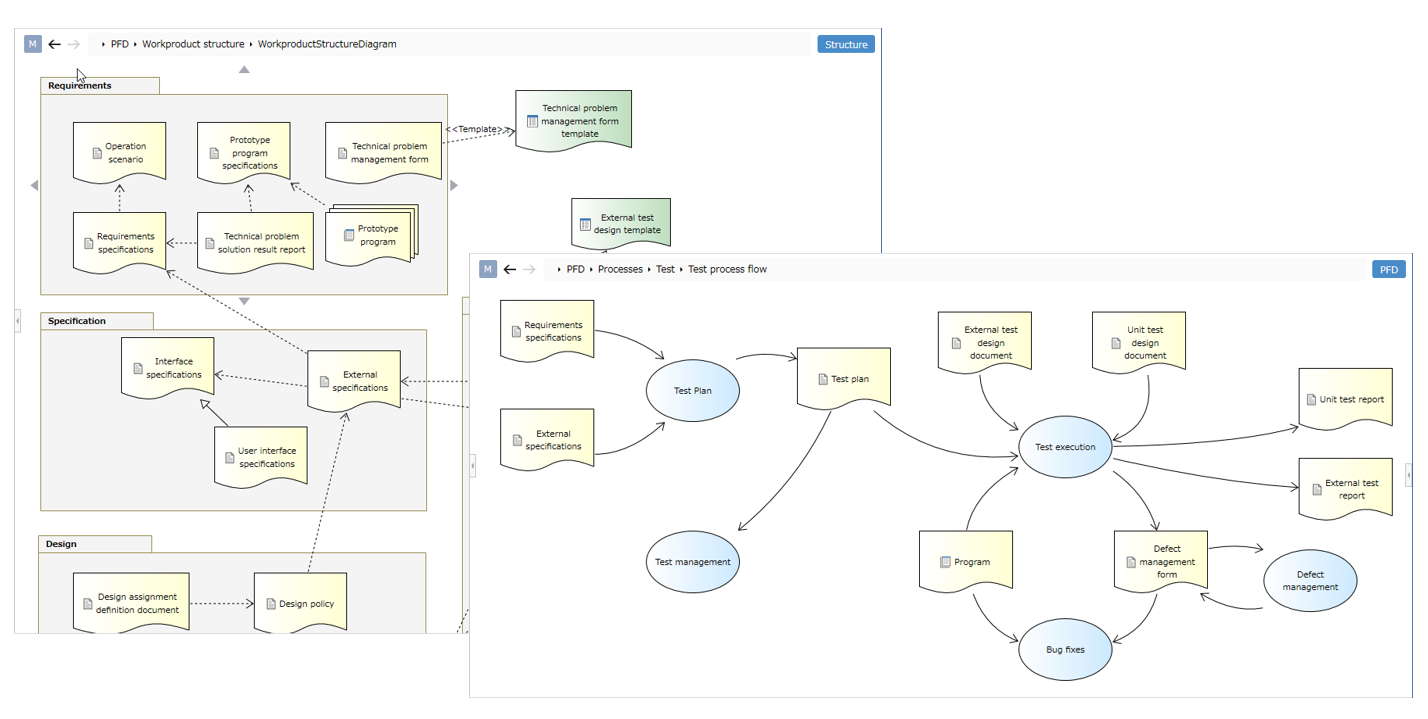
Package contents
| File Name | Category | Description |
|---|---|---|
| PFD.iproj | Sample Project | This is a sample that defines an example of a process definition. |
| PFD.iprot | Template | This is a template that allows you to easily start writing process definitions, especially PFDs. |
| PFD.iprof | Profile | Process definition profile. You can also import it into any project. |
List of figures that can be described
- Indicates diagrams that can be described in this package.
| Picture | Description |
|---|---|
| Process flow diagram | You can describe PFD. The deliverables defined in the deliverable structure diagram can be defined as inputs and outputs of the process. |
| requirement model | allows you to define requirements for your process. |
| Workproduct structure | You can define deliverables. You can visualize the deliverables of each process and their relationships. |
| Artifact class diagram | You can define the structure of your deliverables. You can define the contents to be described in the deliverable as classes and attributes. |
| Organization chart | As part of the role definition, you can define relationships between roles. |
Describeable model overview
- Arbitrary structures can be organized by adding packages in the model navigator.
- You can add each diagram, process and deliverables under the package and describe the process definition.
- Added elements are placed under packages and diagrams.
- You can also define roles, guidelines, and deliverable templates to execute the process.
Process Flow
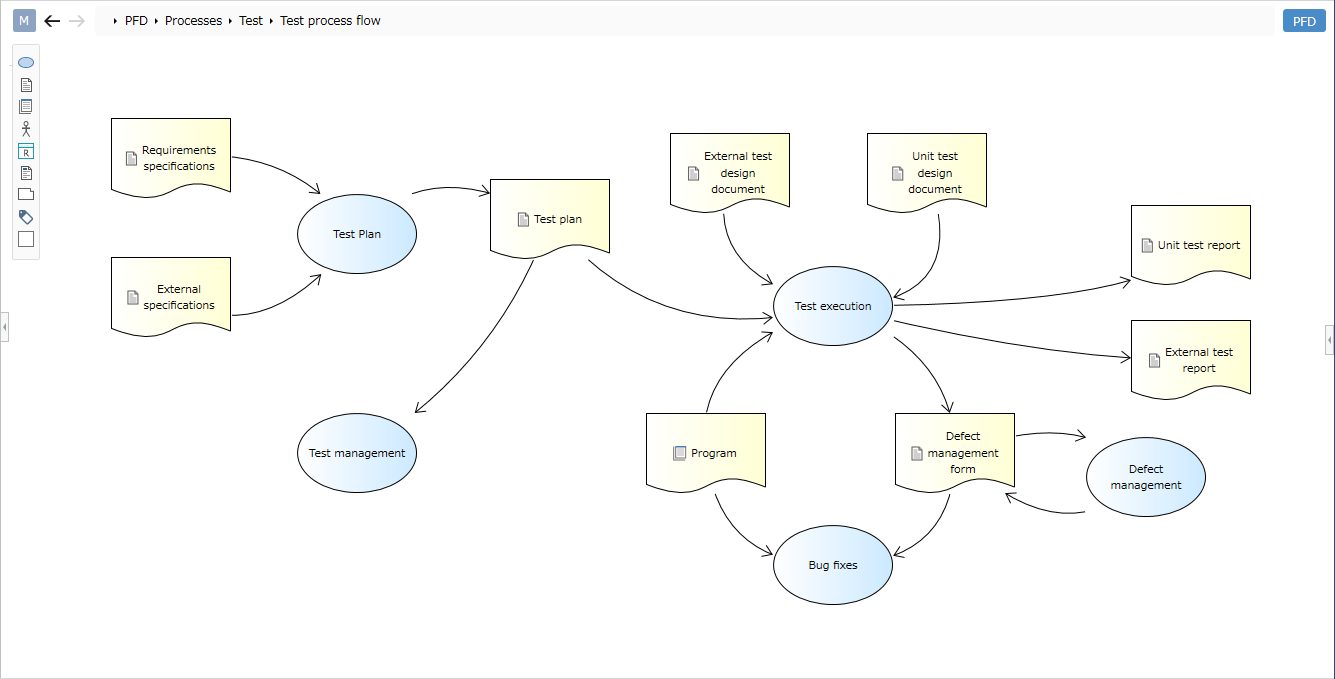
Overview
- A process flow can define a process and its input/output deliverables graphically.
- Define processes, deliverables, deliverables, roles, requirements and guidelines.
- By dragging and dropping roles from the model navigator to the diagram, you can define the primary contact and stakeholders to fulfill the process.
- By dragging and dropping the guidelines from the model navigator to the diagram, you can define the guidelines that the artifacts and processes refer to.
Restrictions
- Numbers for processes and deliverables are not visible on the diagram. Check it in the details view of the sub-editor.
- Processes with a hierarchical structure cannot be expressed (double circle).
- It is not possible to change to a shape (symbol) according to the type of deliverable.
- Triggers cannot be written.
Requirement Model
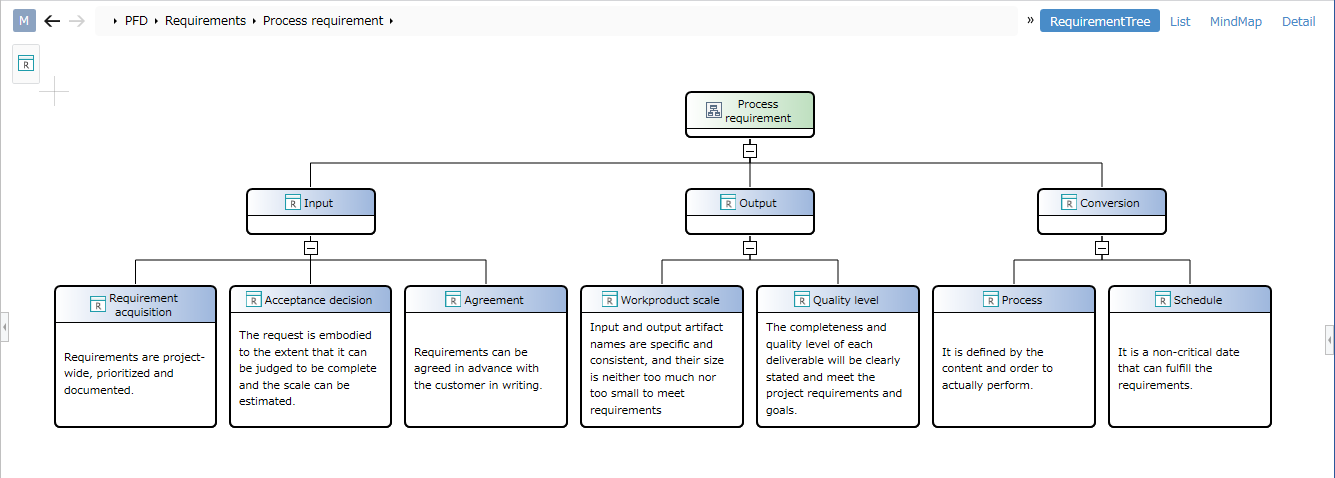
Overview
- Can describe requirements for processes and deliverables.
- Requirements can be subdivided and described in a hierarchical structure.
- Requirements defined in the requirement model can be placed in process flow diagrams and deliverable system diagrams.
- You can define traces with requirements by defining relationships between requirements and processes and artifacts.
workproduct structure
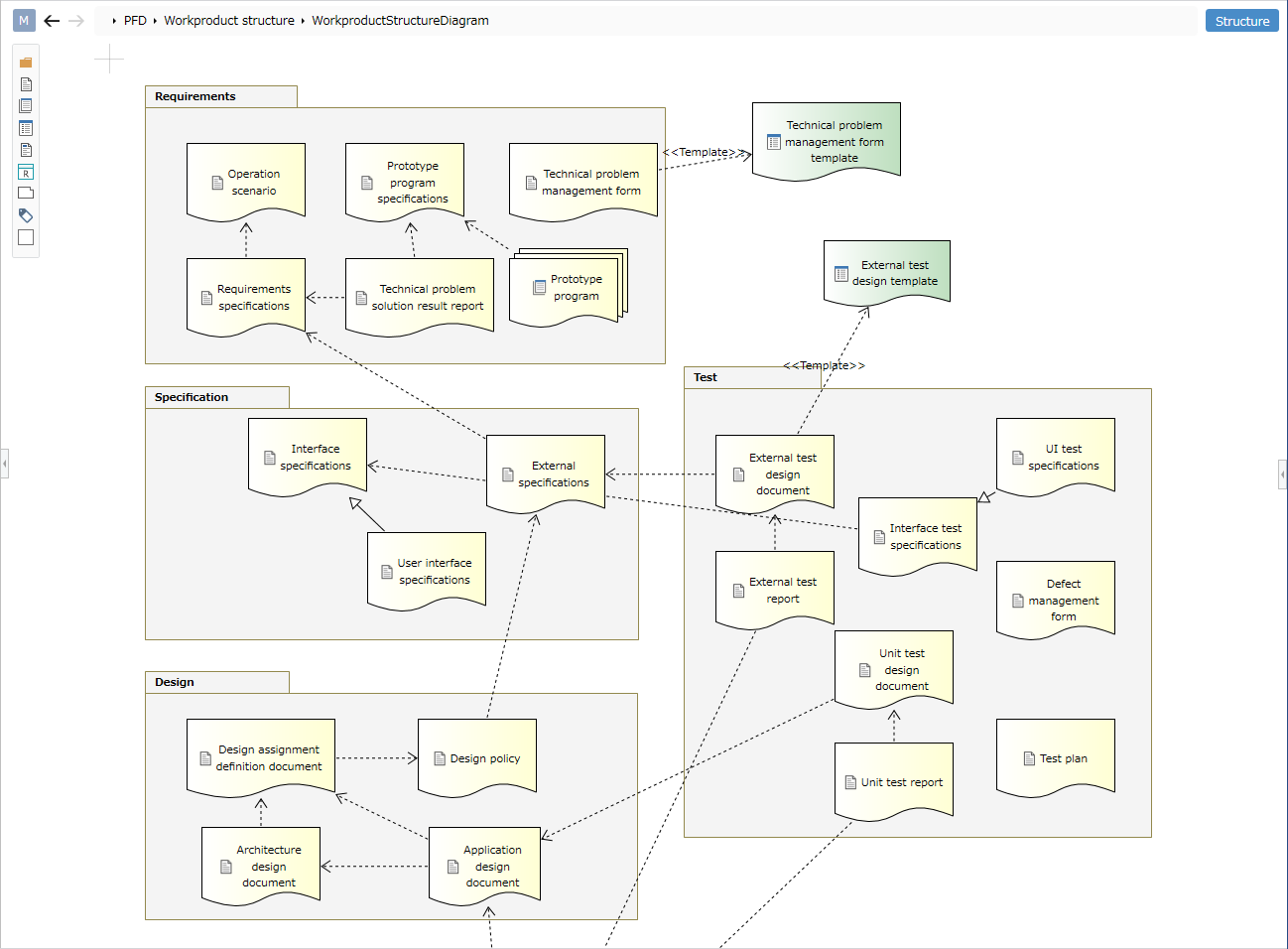
Overview
- You can define deliverables for each process. You can also define dependencies between artifacts.
- Define folders, deliverables, deliverables, templates, guidelines and requirements.
- You can also define the relationship between artifacts and templates by dragging and dropping template models from the model navigator to diagrams.
- You can also define the relationship between deliverables and requirements by adding requirements models to the diagram by dragging and dropping them from the model navigator.
Artifact Class
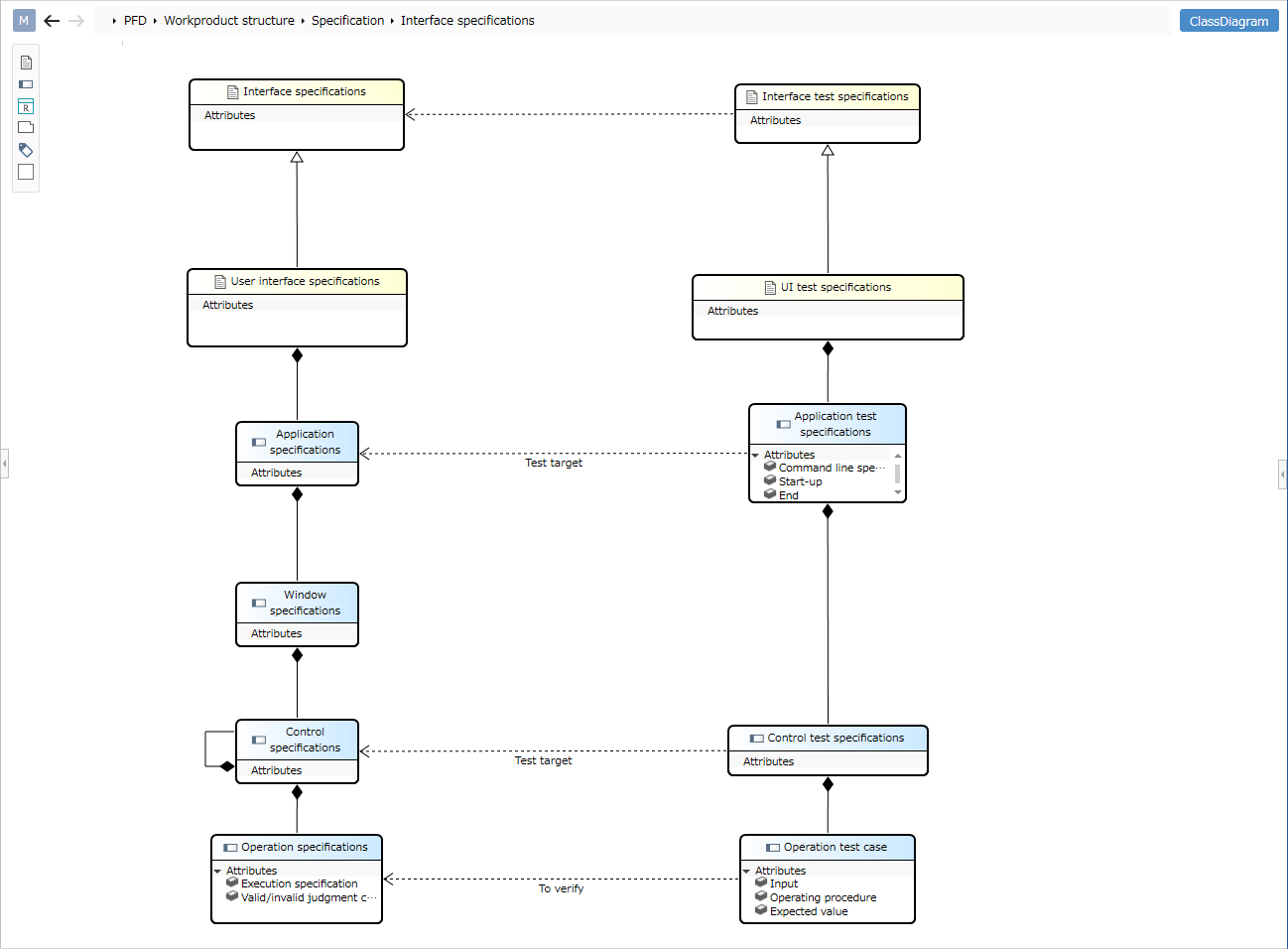
Overview
- You can define the structure of the deliverables defined in the deliverable structure. Classes and attributes can define what should be written in artifacts.
- You can define deliverables, content and requirements.
- You can define relationships (derived, owned, inherited, related) between artifacts and their content.
- Attributes can be used to define what to include in deliverables and content.
- You can also define the relationship between deliverables and contents and requirements by adding requirements models to the diagram by dragging and dropping them from the model navigator.
Restrictions
- Because it is a simple diagram that uses the UML class diagram notation, it does not support strict notation based on the UML standard.
- Basic attributes of classes such as stereotypes and abstract types cannot be defined.
- Relations that can be defined between classes are also limited.
common definitions
Role Definition and Organization Chart
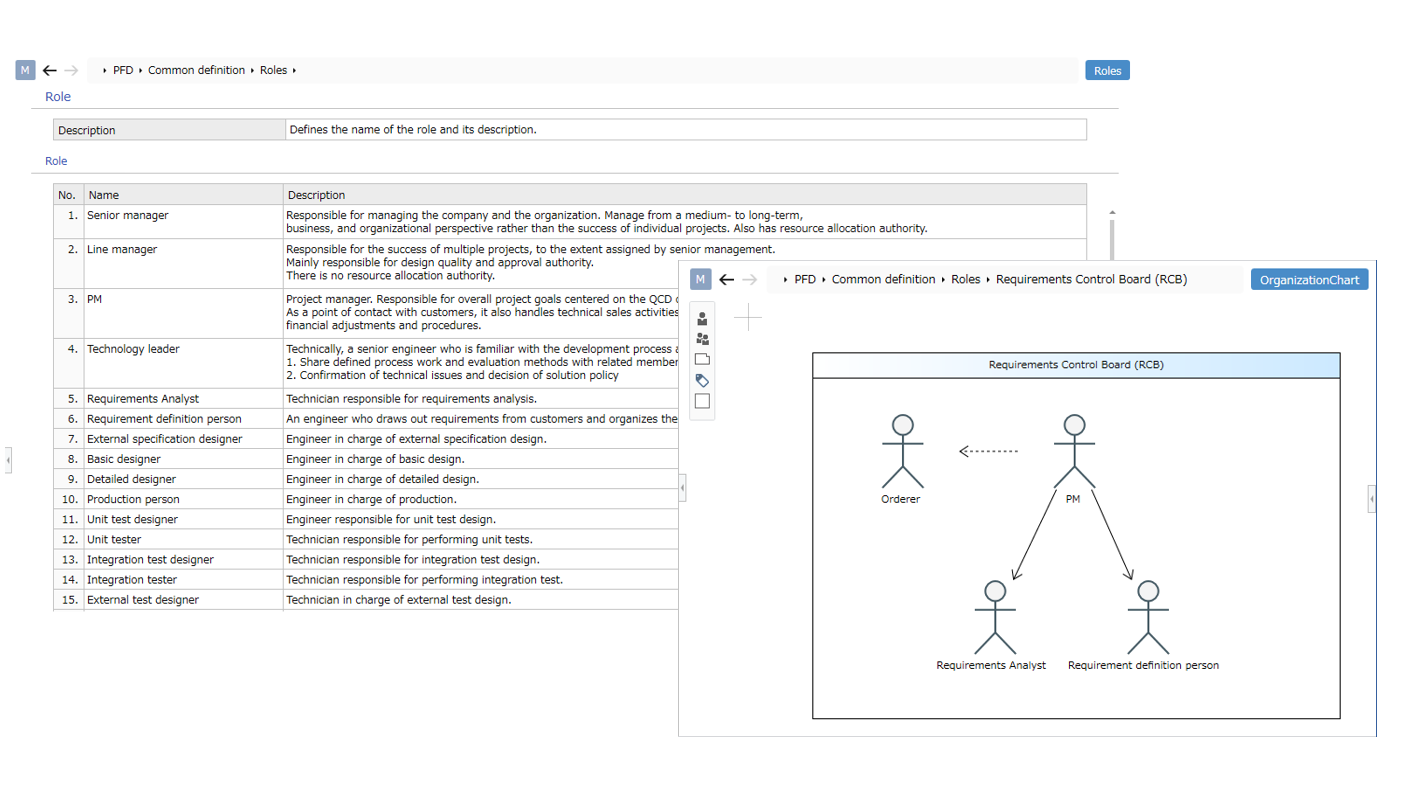
Overview
- You can define roles and their responsibilities.
- You can define relationships between teams (organizations) and roles as a system chart.
- You can define members (roles) and teams (organizations).
- You can define relationships (dependency, inheritance) between members.
List of Guidelines

Overview
- You can define guidelines that your deliverables and processes refer to.
- Guidelines defined in the guideline list can also be placed in process flow diagrams and deliverable system diagrams.
- By defining the relationship between processes and deliverables, it is possible to illustrate which guidelines should be referred to in each.
Template list

Overview
- Ability to define artifact templates.
- Templates defined in the template list can also be placed in the deliverable system chart.
- By defining relationships with artifacts, you can illustrate which template should be used.
Code list

Overview
- You can define code for processes.
- Please define and use any identification code such as process.